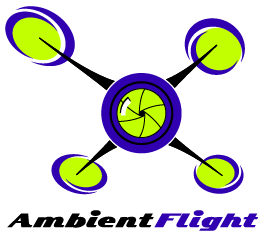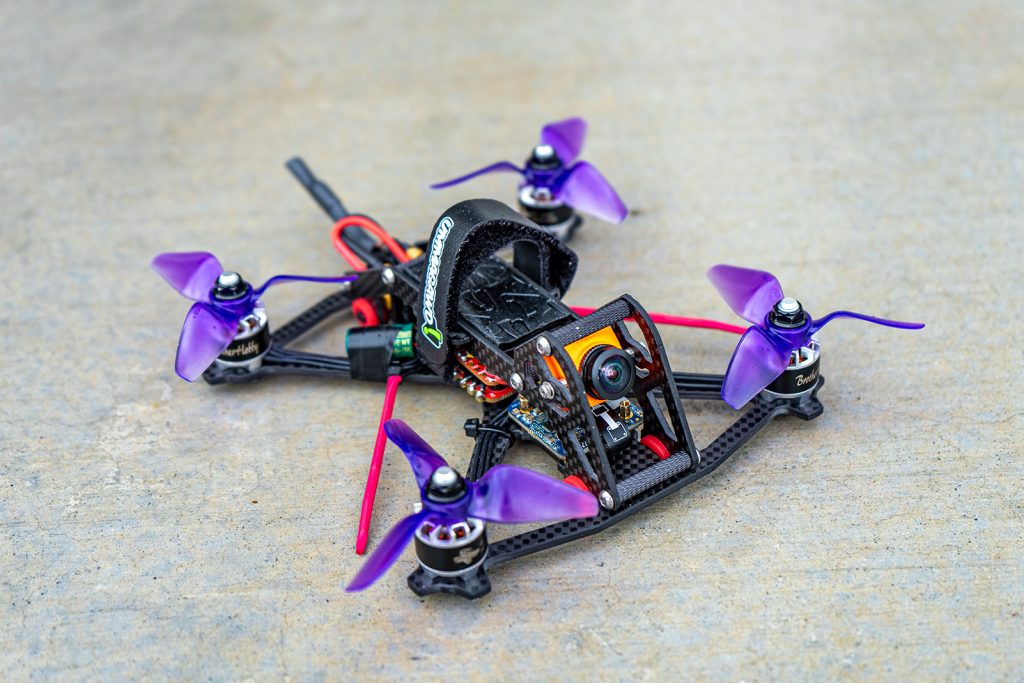

I think this may have been my first build which I started and completed, and successfully maidened in one day. I’ve wanted to have a DJI HD FPV based quad that was smaller than the two 6S 5″ quads I currently have. Something more portable, and able to fly in smaller areas.
iFlight DC3 HD Frame
The frame is the iFlight DC3 HD. DC stands for “deadcat,” which is an arm design which results in the camera having no props in view.
Deadcat designs are what many cinematographers choose.
FPV
I’m hooked on DJI’s FPV system because of numerous reasons, including the clarity of the FPV view in the goggles, recording HD 4K video on board, and elegant interfacing. So that’s why I chose the system for this build.
Receiver
For my receiver I’m using TBS Crossfire. I’ve seen the light with TBS Crossfire and its long range capabilities. I’ve essentially vowed that from now on I will be using Crossfire for all my builds. This small quad has Crossfire, as well as the Immortal T antenna.
Motors/Power
I’ve been testing out some EMax motors recently. I decided to go with the Emax ECO Micro Series 1407 motors at 2800kv. Based on that one might guess that I decided to run the system on 4S battery power.
Currently my battery of choice is a CNHL 4S 650MAH.
Stack
For the flight controller and 4in1 ESC I went with the Diatone Mamba Stack F405US MK3 Mini F35. I have a couple of other Mamba ESC’s in quads and I’ve been satisfied with their performance. The stack is capable of running 6S.
3D Printing
I found some arm bumpers/motor soft mounts online to 3D print. I also designed a 3D printed set of mounts for the Crossfire Immortal T.
I went with orange TPU filament to go with the orange theme of the quad.
Flying
I’m about to do some real flying with the quad in the next few days and will post some performance comments, and flying videos soon. Overall I’m very happy with the build and the equipment choices.
I’ve been enjoying flying my 3-inch Acrobrat quad build. It’s based on a 4s battery power and has a RunCam Split Mini camera. The Split captures HD video to an SD card. The upper frame section, which is what the camera attaches to, is not connected to the main frame by screws or direct plate to plate carbon fiber. Instead, there are four rubber grommets which help reduce vibration. That vibration reduction helps eliminate any vibrations or “jello” in the HD video from the RunCam Split mini. Ingenious!

In the photo above of the finished product, you can see the rubber grommets in the lower front and lower rear section. They’re the round red parts.
Frame
As mentioned, this is the Ummagawd Acrobrat frame. The main plate is 3mm bi-axial toray carbon fiber. The side plates are 2mm CF and the top battery plate is 1.5mm. Along with the red vibration dampeners, there are other color dampeners. Each color has a different hardness. I started with the red and had good results, so I haven’t even tried the others.
The motor to motor dimensions are 163mm. Dry frame weight is 54 grams. The motor bolt pattern is 12x12mm.
Camera
I chose a RunCam Split mini, but the frame could also work with a Caddx Turtle. The split camera has a separate board which is mounted under it. The board records to microSD and has buttons to configure and start/stop recording.
Motors
I’d heard a lot of positive feedback about Brother Hobby motors so I decided to give some a shot in this build. I went with their Tornado T1 1407 2800KV. I’ve been very happy with them. This was my first 4S build after flying 3S or less on everything else. I was happily surprised with the amount of power, speed, and responsiveness on 4S.
Flight Controller
I rolled with the HGLRC 20x20mm F4M3 OSD Flight Controller flight controller. This F4 board features a black box, OSD, 20×20 mounting holes, and supports SBUS, which is my preferred receiver format.
ESC
I chose the HGLRC D20A 20A 2-4S 20X20 4in1 ESC as it matched up well with the flight controller. It’s 20amps with 20×20 mounting holes and runs the BLHELI_S firmware. It can run on 2-4S lipo power.
Video Transmitter
I kept with the HGLRC theme for my VTX. The HGLRC Forward VTX Mini 25-350mW 20×20 VTX – MMCX has high level power filtering which produces a pretty clean video and a solid range. In the same amount of time I’ve been running this VTX, I’ve burned out two other AKK VTX’s.
Antenna
I’ve been running a Team Blacksheep (TBS) Triumph. The antenna is very durable and produces a clean video signal with a long range.
Props
So far I’ve been running Gemfan 3028 3-blade 3″ props. They’re quite pitched and provide a ton of power and responsiveness without producing video killing vibrations.
Sample Video
The video clip below was shot late in the day, to get an idea of lower light quality on the RunCam Split. Also if you watch the whole video you’ll see the quad go into failsafe mode. Hehe.
Final Thoughts
The Acrobrat is fun to fly on 4S. It’s responsive, agile, and solid. When paired with the RunCam Split mini, the Acrobrat produces decent quality video without the need of a GoPro or higher quality action camera. The video isn’t as high quality as a GoPro, but is good enough for many FPV racing and freestyle flights.
I just started up my 3rd build in three weeks. This one is the three inch Acrobrat HD Freestyle Quadcopter. I had “accidentally” bought some motors and decided to build a quad around them. Hehe.
This one will have a RunCam split camera. The Split is not only an FPV camera, but also captures 1080p/60fps HD. That camera along with the Acrobrat frame which has some nice vibration dampening makes for a quad that can produce some fantastic HD video without a GoPro. We shall see.
This build is about half way done. Should be launching it this weekend.